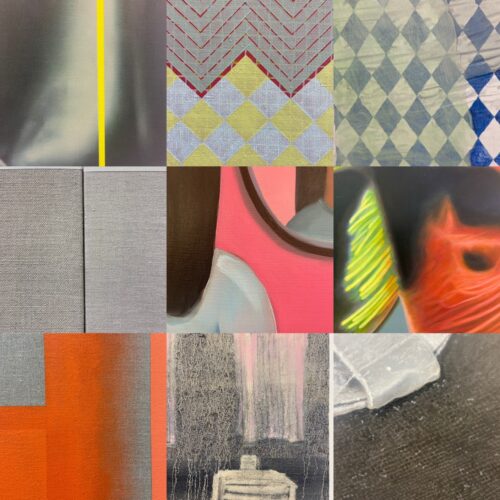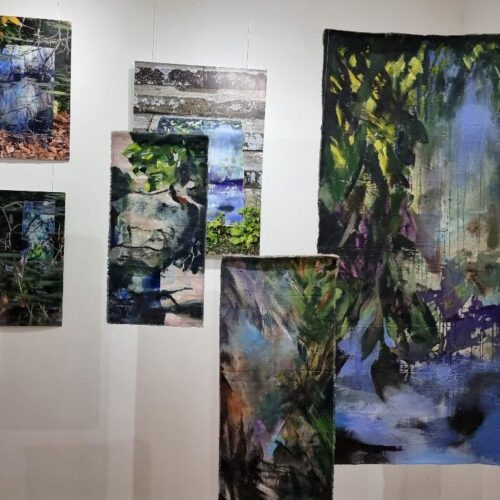
Erotically shaped vegetables and cheap nylon tights
On 17 October 10 students and two tutors from OCA visited Leeds to see work by Sarah Lucas and Helen Chadwick at the Henry Moore Institute, a mixed show about the relationship between drawing and sculpture and Leeds Art Gallery’s outstanding collection of 19th and 20th century British art.
The group, which comprised mainly sculptors, responded positively to Helen Chadwick’s use of unfamiliar materials such as Windowlene, stewed fruit and cooking oil, which she photographed in beautiful, if slightly sickly, compositions. As an artist who died aged only forty-three, her meditations on decay and evanescence seemed to predate the work of Damien Hirst. They were perfectly complemented by Sarah Lucas’s sly debunking of traditional views of womanhood and her use of seemingly non-aesthetic materials such as erotically shaped vegetables and cheap nylon tights.
There was much discussion about Lucas’s use of irony, her transformation of the perceived value of her images through expensive processes such as bronze casting and her arrangement of objects in sequences that told stories or presented a record of an event.
Perhaps the most interesting of the three temporary shows was the one about the relationship between drawing and sculpture. This presented relative newcomers such as Anna Barriball, Alice Channer, Sara Barker, Aleana Egan alongside earlier artists such as Martin Boyce, Alexander Calder, Lynn Chadwick and Alison Wilding.
One of the most popular historical works was Barry Flanagan’s suggestion of the head, tail and body of a hare through his arrangement of three stones placed, seemingly at random, one above the other. The casual way in which Flanagan undermined the totemic nature of the image suggested parallels with the work of Sarah Lucas, whose sculpture had already evoked comparisons with the drawing on silver paper. Even more effective was Martin Naylor’s 1973 work in which objects such as a tripod, a table top and a broken cup were lit from behind to create enigmatic shadows like the characters on a stage set.
Our final visit was to the main collection. The highlights include Vorticist work by Wyndham Lewis, CR Nevinson and William Roberts, lyrical landscapes by Graham Sutherland, John Piper and Christopher Wood and an outstanding collection of sculpture by Henry Moore, Naum Gabo and others working in the international modernist style associated with Constructivism. The group was able to compare geometrical works by Ben Nicholson and Barbara Hepworth from the early 1930’s with more organic and representational works by the same artists after their move to Cornwall at the start of the war. They were also able to trace the development of a uniquely English version of modernism associated with the portrayal of village communities and prehistoric sites by artists working on the thin chalk soils of the south coast.
As was the case in the temporary exhibitions, the works inspired plenty of debate and differences of opinion, as was to be expected from two great galleries that are always worth a visit. ‘Drawing:Sculpture’ continues to 11 November 2012 and Helen Chadwick’s ‘Wreaths of Pleasure’ to 17 February 2013.






I started History of Western Art Part 1 in September and would like to hear from anyone who is doing the course near London